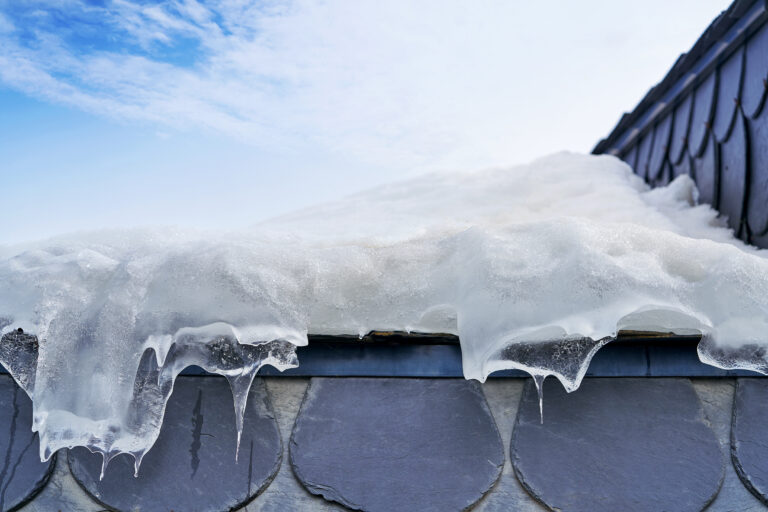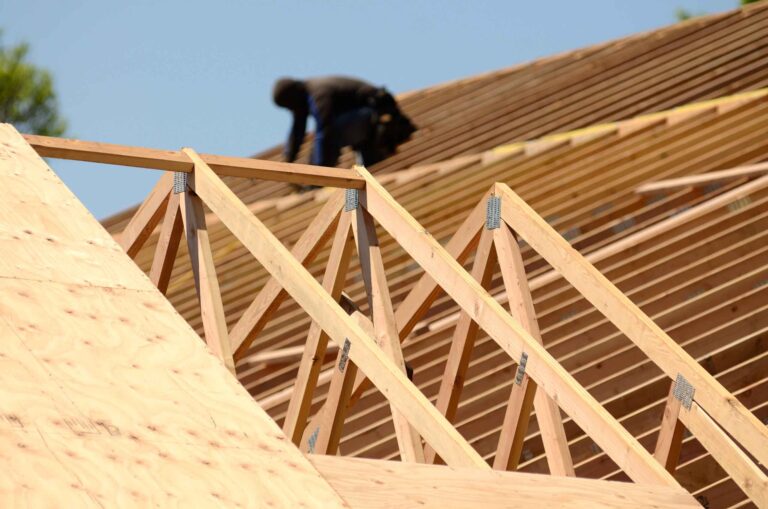Winter is almost here! The cold weather brings snow, rain, and ice that can cause damage to different parts of your house. One of the most vulnerable parts is the roof, which is constantly exposed to the elements. A roof is meant to provide shelter and protection to the interior of your home, but how does it fare in extreme winter weather? In this blog post, we will discuss how the cold weather affects a house’s roof and what you can do to prevent any damage.
Condensation Buildup: In winter, the inside of a house is typically warmer than the outside. This temperature difference can cause condensation buildup on the roof’s underside. This buildup can lead to mold growth, which can affect your home’s air quality. In extreme cases, the growth can cause rotting of wooden beams and rafters. To prevent this problem, ensure proper ventilation in your roof’s attic area to allow the moist and warm air to escape.
Ice Dams: Ice dams are a common occurrence during winter. These result from the melting of accumulated snow, which then refreezes at the colder eaves of your roof. Ice dams can cause significant damage to your roof by pushing water under shingles, leading to leaks. To prevent this, ensure that your roof and attic are properly insulated to prevent heat loss, which causes the melting of snow. You can also use heating cables along your roof’s eaves to melt the snow and prevent ice buildup.
Cracking of Shingles: In extreme cold temperatures, materials contract. Asphalt shingles, which are prevalent in most roofing materials, can become brittle and more susceptible to cracking. Once shingles develop a crack, water can easily penetrate, leading to leaks. To prevent this, replace any damaged or missing shingles before winter and ensure that your roof is regularly inspected and maintained.
Damage to Flashing: Flashing refers to the metal strips installed in the joints and valleys of your roof to prevent water penetration. Due to extreme temperatures, flashing can become brittle and crack, causing water to seep through. To prevent this, ensure that flashing is inspected regularly and replaced if necessary. This ensures that water is kept out of your attic and home interior.
Decreased Structural Integrity: When temperatures fluctuate, roof materials can expand and contract a great deal, causing stress on the roof. In extreme cases, such as in areas with frequent freeze-thaw cycles, roof materials can warp, buckle, or develop gaps. The overall effect can be decreased structural integrity and a higher likelihood of leaks. To prevent this, have your roof inspected regularly and watch for signs of damage to roofs’ interior or exterior.
The cold weather can cause significant damage to a house’s roof. However, by being aware of the most common problems and regularly inspecting and maintaining your roof, you can prevent any damage from becoming severe or compromising your home’s structural integrity. Remember to ensure proper ventilation in your attic space, prevent ice dams with insulation and heating cables, replace any damaged or missing shingles, repair flashing, and regularly inspect your roof. Finally, if you are unsure about anything roof-related, consult an expert to protect your investment. Stay safe and warm this winter!









